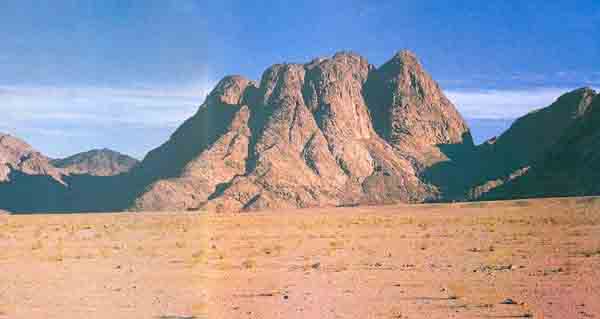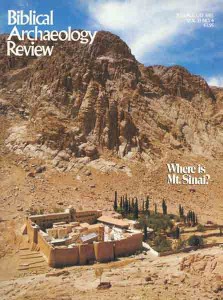Monastery Complexes on Jebel Sufsafeh
Sidebar to: The Southern Sinai Exodus Route in Ecological Perspective

Jebel Sufsafeh, identified in the Byzantine period with Biblical Horeb (Exodus 3:16, etc.), rises about 7,000 feet above sea level just south of St. Catherine’s Monastery. The multi-peaked Jebel Sufsafeh is actually an offshoot—over a mile long—of Jebel Musa, the traditional site of Mt. Sinai from the time of the early Christian communities in the fourth century A.D. Jebel Sufsafeh’s slopes are steep and barren of vegetation, but in clefts between several of its peaks are small mountain valleys covered with deposits of alluvial soil. In most of these deposits of rich soil small monastic complexes were erected in the fourth to sixth centuries. Because of the proximity of Jebel Sufsafeh to the places identified as the Burning Bush and Mt. Sinai, Byzantine occupation was particularly intensive in the fertile crevices between the bare granite slopes. In fact, of all of the southern Sinai mountains, it is here at Jebel Sufsafeh that the most intensive accumulation of Byzantine remains is found.
Already a library member? Log in here.
Institution user? Log in with your IP address.

